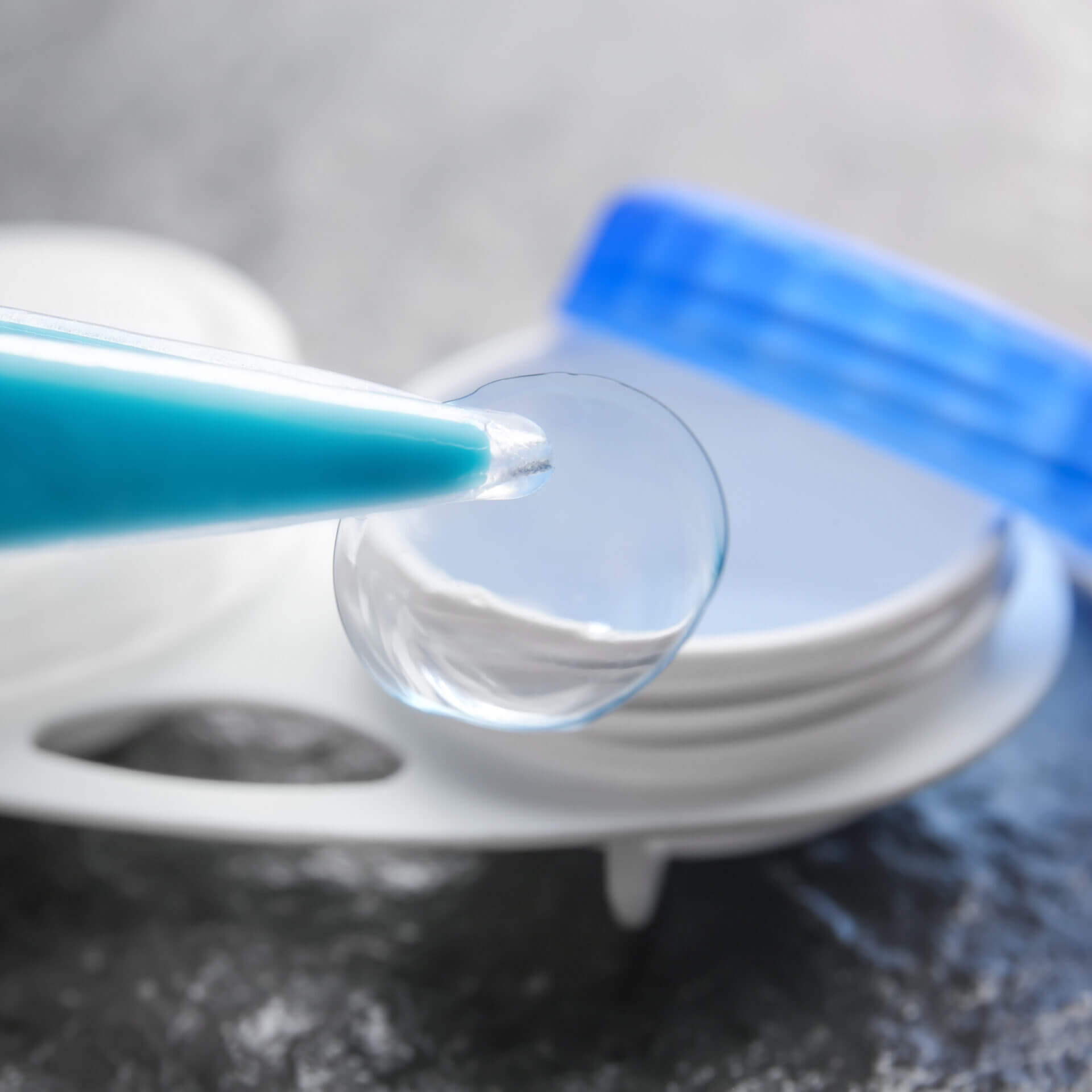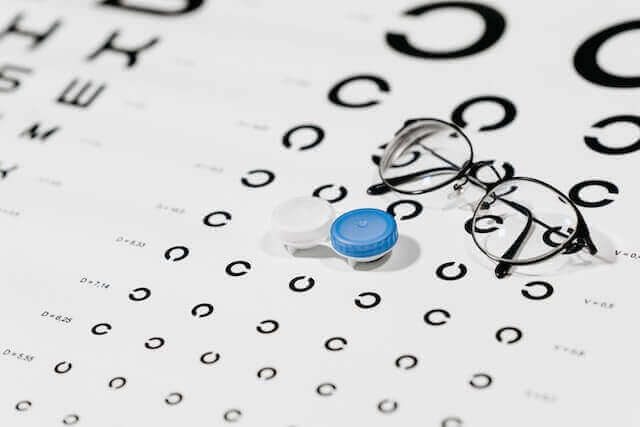Bifocal or Progressive Contact Lenses and Reading
Bifocal and Progressive Contact Lenses are some of the best contact lenses available for those who need help with their reading vision. These types of lenses are designed with two or more prescriptions in one lens, allowing wearers to see clearly at both near and far distances. The bifocal portion of the prescription provides clear vision for activities such as reading and close-up tasks while the rest of the lens allows for clear distance vision. Multifocal lenses work similarly but may cause more disruption in vision due to the multiple powers within one contact lens. Bifocal and Progressive Contact Lenses provide a clearer, more comfortable vision experience compared to multifocal lenses by giving you sharper images than multifocal lenses can offer.
Scleral lenses for Presbyopia
One of the benefits of scleral lenses is that they stay in place better, they reduce dryness, and they provide a new optical surface, it is for this reason that scleral lenses have become an extremely popular choice.
For patients that have corneal irregularities or severe dry eye, scleral lenses are an incredible, often life changing contact lens. However for patients that have presbyopia, scleral lenses are also available in multifocal design. The challenge with scleral lenses in a multifocal design is that they vault over the eye and this can impact the quality of vision due to the design of multifocal lenses requiring them to be centered on the pupillary axis. Thankfully there are many new designs that improve on the visual outcome of scleral lenses in multifocal design, although fittings may require a few more visits than a standard scleral lens fit.
Another option for patients with presbyopia that choose scleral lenses is for a monovision option, where one eye is for near and the other for far. This solves the challenges in multifocal design, and may improve clarity for reading, however as noted in the monovision section above, this design also has its own set of difficulties.
If you are a scleral lens wearer or are considering scleral lenses for presbyopia due to having keratoconus, corneal conditions, severe dry eye, or for other reasons, it is best to schedule an appointment for scleral lenses for a complete evaluation and discussion. Since scleral lenses are much more customized than traditional contact lenses, specific guidance is important from an eye doctor that specializes in contact lenses. Learn more about scleral lenses.
The best contact lenses for reading for children
As noted above there are two categories of children that can benefit from contact lenses, both near and farsighted children can benefit from contact lenses, however the specific needs of each group is very different. Typically contact lenses are a fantastic option for children starting from the age of 8 years old, although maturity is more important than age. Kids tend to prefer contact lenses over glasses and multiple studies have shown that contacts are well tolerated in kids. For any patient contact lenses can pose additional risks if instructions are not followed, which is why maturity is an important consideration.
Hyperopia or farsighted children and contact lenses
For kids with hyperopia contact lenses can be a great option. There are a wide range of modalities from daily disposable lenses (ideal due to minimal upkeep) all the way to hard contacts and scleral lenses. Generally a bifocal or multifocal contact lens in daily disposable, is recommended. However in some cases, for example where the child also has high astigmatism other lens designs such as rigid gas permeable lenses or toric lenses may be recommended.
Another great option for farsighted kids is called orthoK or orthokeratology. These lenses address hyperopia as well as astigmatism, and result in crisp and clear vision for reading. These lenses are only worn while sleeping, and gently reshape the eye, leaving the child with crisp and clear vision all day, without the need for glasses or contact lenses. It goes without saying that these lenses are extremely popular with kids, as they enjoy not needing to wear glasses or contacts, great vision, and not having to worry about corrective lenses during sports. OrthoK lenses are widely prescribed to kids around the world with great success, although the cost of orthok lenses is higher than other modalities.
If your child is having trouble with reading with their contact lenses, discuss the best options with an optometrist that specializes in contact lenses.
Myopia or nearsighted children and contact lenses
For children with myopia the most important element is to slow down the progression of the condition. So while you may be considering whether your child should wear glasses or contact lenses, or perhaps they have tried contact lenses but are not getting the best vision, contact lenses are far superior to glasses as they prevent serious complications later in life. This is critical because for every diopter of change in prescription the risks for severe vision threatening eye disease increases significantly.
For every diopter change:
- 30% increase in risk of retinal detachment
- 67% increase in risk for myopic maculopathy
- 20% increase of risk for open angle glaucoma
- 20% increase of risk for posterior subcapsular cataract
There are two contact lens modalities used for myopia management, soft multifocal contact lenses and OrthoK night time lenses.
OrthoK Night time Contact Lenses are an extremely successful option for kids with nearsightedness, and have the benefit of only being worn while sleeping. While both the MiSight and OrthoK lenses are excellent options for myopia management, orthoK lenses will generally have better visual clarity for reading.
Soft multifocal lenses for myopia management include the MiSight® 1 day, which is the only FDA-approved soft contact lens proven to slow the progression of myopia (nearsightedness) in children, aged 8-12 at the initiation of treatment. The 3 year clinical trial found that best corrected acuity with MiSight 1 day was within one letter for the dual focus lens and the control (single vision) lens at distance and near.



















